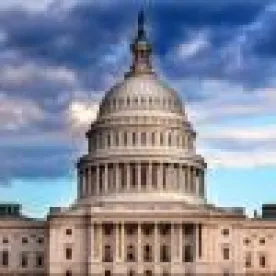Since last summer the Appropriators and the Leaderships on both sides of the Rotunda have said that any final decision on passing appropriations measures for FY 2015 will depend on the outcome of the election.
Although the election has passed, there will be no certain decision about FY 2015 until, at the earliest, next week when the Members return. Then, they will decide whether to consider a full omnibus appropriations bill or a year-long continuing resolution (CR), or some combination thereof, during the lame duck. The leadership could also decide to punt a final decision on FY 2015 to the new Congress.
Despite the complexities involved, the Committee has a good chance of completing its work during the lame duck. This optimism is based on several factors.
First, there is a strong desire to get it done. The Leaderships of the Appropriations Committees have never wavered in their desire to complete FY 2015 and avoid a year-long CR. There is also a desire on the part of the House and Senate Leaderships to wrap up FY 2015, and they have made promises to Chairman Rogers and Chairwoman Mikulski to support their efforts to do that. Moreover, the Leadership recognizes that the political dynamic will not get any better in next Congress.
The Republicans’ internal dispute over how far they should push their priorities, such as defunding healthcare, won’t be alleviated in January. In fact, it will be exacerbated by an influx of new Members who are anxious to demonstrate their commitment to their campaign promises. Finding common ground among Republicans over FY 2015 funding will be even more challenging in January and February when the appropriators are racing against the clock as the pressure builds for the Committee to finish FY 2015 and begin its work on FY 2016. The further into the fiscal year a final bill is delayed, the more likely it is that the Appropriators will have to rely on a CR. A CR would negate the agreements in the various appropriations bills on FY 2015 funding levels that Members on both sides of the aisle would like to see enacted. Finally, Republican Leadership will have a Republican-controlled budget/reconciliation/appropriations process for FY 2016 to help stave off a cry from conservatives during the lame duck to, as a victory lap, urge Members to stand up for their campaign pledges, shut down the omnibus bill, and punt decisions to January when they can get a “better” deal.
On the other hand, several factors could blow up any deal. It will be necessary to fund emergencies (Ebola, Unaccompanied Minors, wildfire suppression for the fires out west) and that is going to be a heavy lift. Either the funding will be outside the caps, which will cause political problems on the right, or it will be funded inside the cap, resulting in painful, controversial offsets, particularly for Democrats. Also, the House adopted a number of controversial funding limitations, or riders. Coming to an agreement on these riders, popular with conservative Republicans, could prove difficult.
Bottom line is that while the task is daunting, the Committee can do it. There are plenty of examples where the Committee has delivered an omnibus bill in two weeks.




 />i
/>i